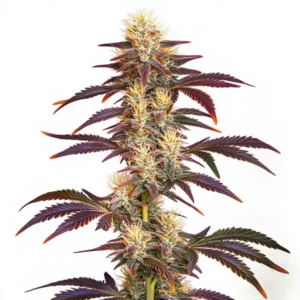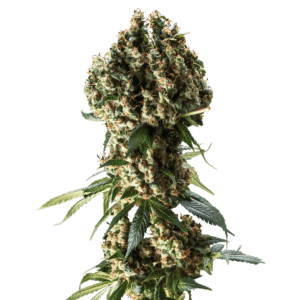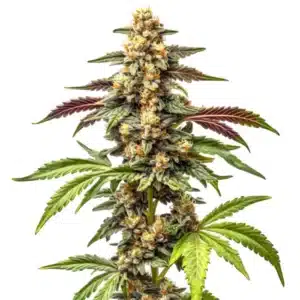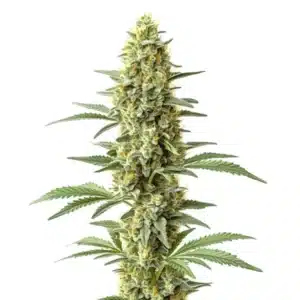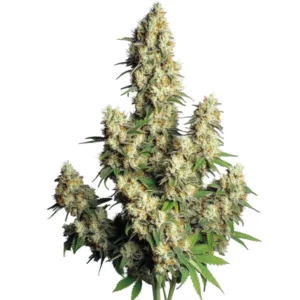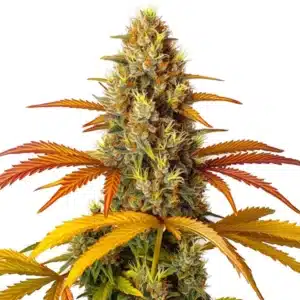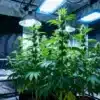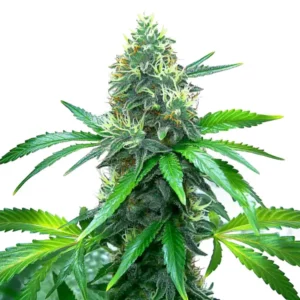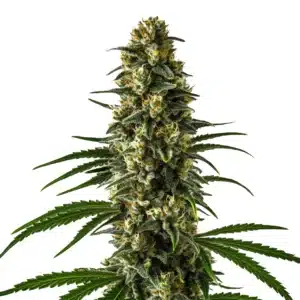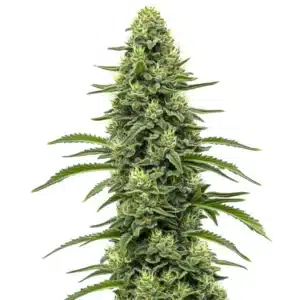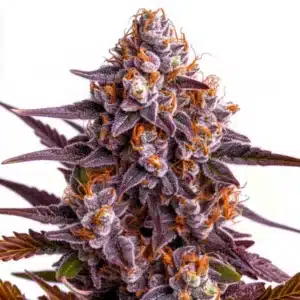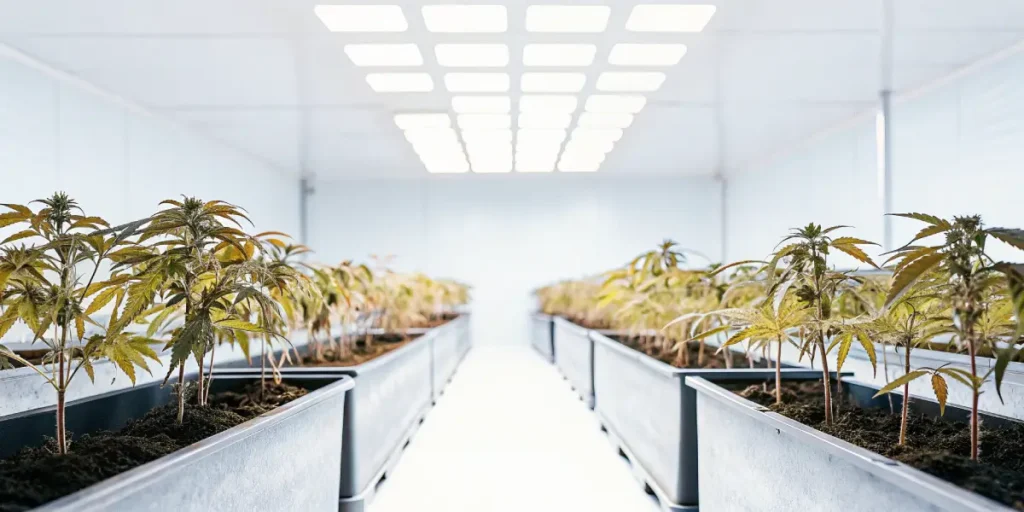
How ROS Affect Cannabis Plants
Reactive oxygen species, or ROS, are molecules formed by the partial reduction of oxygen. They play a dual role in plant life. While essential for signaling processes, excessive ROS can cause harm. In cannabis plants, knowing how ROS affect growth is crucial. Both first-time buyers and seasoned growers need this knowledge for healthy cultivation.
ROS can trigger oxidative stress, a condition where damage occurs due to an imbalance between ROS and antioxidants. This stress can impact cannabis health, affecting growth and yield. Learning how reactive oxygen species impact cannabis yield is vital for maximizing productivity.
Recommended Strains
Grape Ape
|
|
THC | 15% - 25% (Medium) |
|
|
Type | Feminized |
|
|
Yield | High |
|
|
Phenotype | 90% Indica / 10% Sativa |
Granddaddy Purple
|
|
THC | 25% (High) |
|
|
Type | Feminized |
|
|
Yield | Medium |
|
|
Phenotype | 70% Indica / 30% Sativa |
To manage ROS and ensure optimal plant health, growers must adopt strategies for oxidative stress management in cannabis cultivation. These strategies can help mitigate ROS damage, promoting robust growth and high yields.
Effects of Reactive Oxygen Species on Cannabis Growth
ROS are naturally produced during photosynthesis and respiration. In small amounts, they assist in cellular functions and defense mechanisms. However, excessive ROS levels can lead to oxidative stress, harming plant cells. Cannabis plants are particularly sensitive, making ROS management crucial.
When oxidative stress occurs, cannabis leaves may show signs of damage, such as browning or wilting. This damage can hinder the plant’s ability to photosynthesize, ultimately affecting growth and yield. Knowing how ROS affect cannabis plants helps in identifying and mitigating these issues early.
The effects of reactive oxygen species on cannabis growth are not limited to visible symptoms. At a cellular level, excessive ROS can disrupt metabolic pathways, leading to reduced energy production and impaired nutrient uptake. This can significantly slow down growth rates and diminish the overall vitality of the plants. By recognizing these deeper impacts, growers can better appreciate the importance of proactive oxidative stress management in cannabis cultivation.
Besides, ROS can influence the hormonal balance within cannabis plants, further affecting growth patterns and development. Hormones like auxins and cytokinins are essential for regulating growth, and their disruption can lead to uneven or stunted growth. Knowing the function of ROS in these processes underscores the necessity of maintaining balanced ROS levels to support healthy plant growth and optimal yields.
Strategies for Mitigating ROS Damage in Cannabis Plants
One effective way to manage ROS is through the use of antioxidants. These compounds neutralize excess ROS, protecting plant cells from damage. Natural antioxidants found in the soil or added through fertilizers can be beneficial.
Another practical strategy is maintaining optimal growing conditions. Proper light, temperature, and humidity levels can minimize ROS production. Regular monitoring and adjustments ensure a balanced environment for cannabis plants.
Effective irrigation practices also play a crucial role in mitigating ROS damage in cannabis plants. Overwatering or underwatering can both stress the plants, exacerbating ROS production. Implementing a controlled watering schedule tailored to specific growth stages can help maintain plant health and reduce oxidative stress.
Additionally, integrating companion planting techniques can enhance the resilience of cannabis plants to ROS damage. Certain companion plants can improve soil health and increase the availability of natural antioxidants, creating a supportive environment for cannabis growth. This synergistic approach not only aids in mitigating ROS damage but also contributes to a more sustainable cultivation practice.
Promos & Deals
Role of ROS in Cannabis Plant Health
While excessive ROS can be damaging, they also play a crucial role in defense mechanisms. Under stress conditions, ROS act as signaling molecules, activating pathways that enhance plant resistance. This dual nature makes knowing ROS essential for cannabis health management.
By regulating ROS levels, growers can harness their positive effects while minimizing harm. This balance is key to promoting a healthy, productive cannabis crop. The effects of reactive oxygen species on cannabis growth highlight the importance of careful ROS management.
The role of ROS in cannabis plant health extends beyond stress response. They are involved in the regulation of plant development, including seed germination and root growth. Controlled ROS levels can stimulate these processes, enhancing the plant’s ability to establish a strong foundation for growth and resilience.
Moreover, ROS are integral to the plant’s immune response, helping to fend off pathogens and pests. By acting as early warning signals, ROS trigger protective mechanisms that fortify plant defenses. This highlights the importance of not only managing but also knowing how ROS affect cannabis plants to ensure robust plant health and high-quality yields.
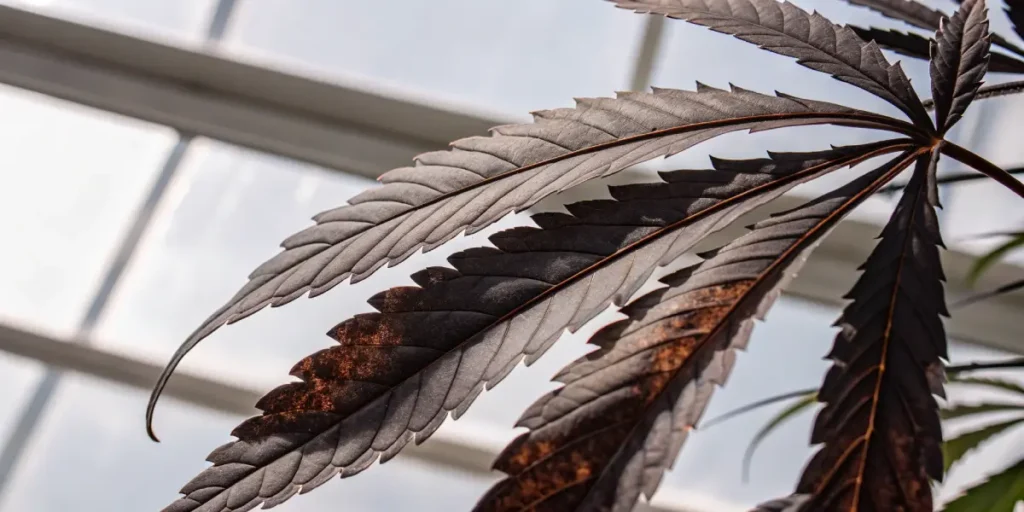
Optimizing Antioxidant Levels
To keep ROS in check, maintaining adequate antioxidant levels is essential. Antioxidants can be naturally present or added through supplements. Growers might consider organic fertilizers rich in vitamins and minerals that boost antioxidant activity.
Implementing a soil testing routine can help identify nutrient deficiencies. Adjusting the soil composition based on these tests ensures that cannabis plants have access to essential nutrients, supporting their natural defense mechanisms.
Organic mulches and composts can also contribute to optimizing antioxidant levels. These materials enrich the soil with beneficial microorganisms and nutrients, enhancing the plant’s ability to produce its own antioxidants. This organic approach to cultivation aligns with sustainable practices and supports long-term soil health.
Furthermore, the timing of nutrient application is critical in optimizing antioxidant levels. Providing plants with a steady supply of nutrients during key growth phases ensures that antioxidant production is consistently supported. This strategic feeding approach plays a significant role in how reactive oxygen species impact cannabis yield by promoting healthier plants and improved growth outcomes.
How Reactive Oxygen Species Impact Cannabis Yield
High ROS levels can adversely affect cannabis yield by damaging plant tissues and inhibiting growth. This damage can result in lower bud quality and reduced overall production. Therefore, knowing how ROS affect cannabis plants is crucial for achieving high yields.
By implementing effective ROS management strategies, growers can minimize stress on their plants. This proactive approach ensures that cannabis plants remain healthy, maximizing their growth potential and yield.
Monitoring environmental conditions is essential in knowing how reactive oxygen species impact cannabis yield. Factors such as excessive light exposure or temperature fluctuations can intensify ROS production, leading to suboptimal growth and reduced yield. By carefully controlling these variables, growers can mitigate the potential negative impacts on yield.
Besides, the use of growth-promoting biostimulants can enhance the plant’s ability to cope with ROS-induced stress. These substances can boost the plant’s metabolic activities and stress tolerance, ultimately contributing to higher yields. Integrating biostimulants into cultivation practices represents an advanced approach to optimizing cannabis yield in the face of ROS challenges.
Monitoring and Adjusting Environmental Conditions
Maintaining optimal environmental conditions is key to managing ROS levels. Temperature, light intensity, and humidity should be regularly monitored and adjusted to prevent stress. Automated systems can help maintain these conditions consistently.
During flowering stages, particular attention should be paid to light exposure. Too much light can increase ROS production, while insufficient light can hinder growth. Striking the right balance is essential for maximizing cannabis yield.
Deploying sensors and environmental monitoring technology can offer real-time insights into how conditions fluctuate, providing data-driven guidance for adjustments. This technology-driven approach ensures precise control over the growing environment, minimizing the risk of ROS-induced stress and optimizing plant health.
Furthermore, seasonal adjustments in cultivation practices, such as light schedules and temperature controls, can help accommodate natural variations in environmental conditions. By aligning cultivation practices with seasonal changes, growers can better manage ROS levels and support consistent plant growth and yield throughout the year.
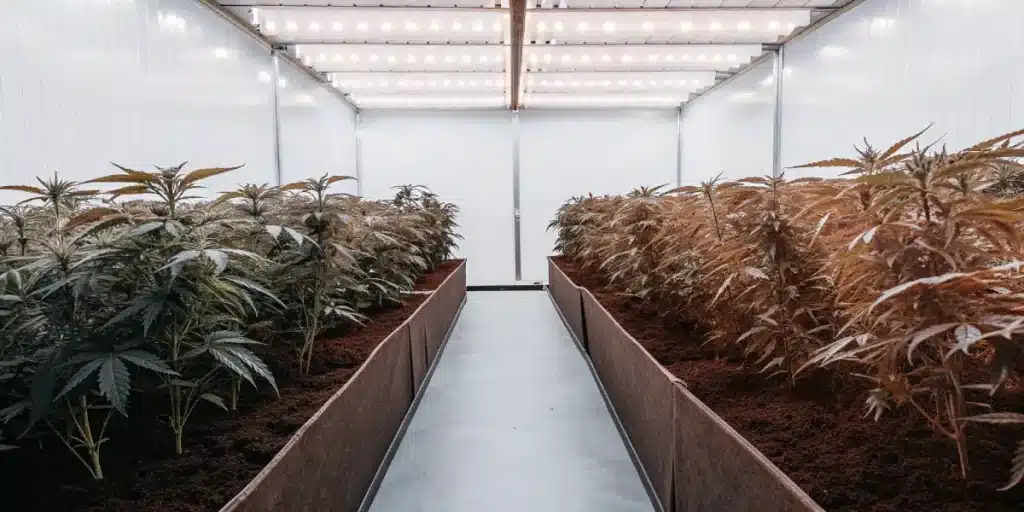
FAQ Section
What are reactive oxygen species (ROS) in cannabis plants?
Reactive oxygen species (ROS) are highly reactive molecules formed from oxygen. In cannabis plants, they play a crucial role in growth and defense but can become harmful in excess. Managing ROS levels is essential for healthy plant development.
Excessive ROS can cause oxidative stress, damaging cells and affecting growth. Cannabis plants are particularly sensitive, making ROS management a priority for growers. Knowing how ROS affect cannabis plants is key to successful cultivation.
Besides to their role in stress and defense, ROS are involved in various developmental processes, such as cell differentiation and elongation. Their presence influences how cannabis plants adapt to changing environmental conditions, making them a critical factor in growth regulation.
Knowing the balance between beneficial and harmful levels of ROS is vital for effective cultivation practices. By recognizing the dual nature of ROS, growers can implement strategies that leverage their positive effects while minimizing potential harm, ensuring optimal plant health and yield.
How do ROS impact cannabis plant health?
ROS play a dual role in plant health. In controlled amounts, they help signal defense mechanisms, enhancing plant resilience. However, too much ROS leads to oxidative stress, damaging tissues and hindering growth.
Proper management of ROS levels ensures that cannabis plants benefit from their protective role without suffering damage. This balance is critical for maintaining plant health and maximizing yield.
The impact of ROS on cannabis plant health also extends to their influence on secondary metabolite production. Compounds such as cannabinoids and terpenes can be affected by ROS levels, impacting not only plant health but also the quality and potency of the final product.
By knowing how ROS affect cannabis plants, growers can take measures to optimize secondary metabolite production, enhancing both the therapeutic and commercial value of their crops. This comprehensive approach to ROS management is essential for cultivating high-quality cannabis plants.
What strategies can mitigate ROS damage in cannabis plants?
There are several effective strategies for mitigating ROS damage. Using antioxidants, adjusting environmental conditions, and selecting resilient strains are all practical approaches. These methods help balance ROS levels, protecting plants from stress.
For example, strains like Grape Ape, Granddaddy Purple, and Critical Mass from Blimburn Seeds are known for their resilience. Incorporating these strains into cultivation practices can enhance plant health and yield.
Besides to selecting resilient strains, growers can implement integrated pest management (IPM) strategies to reduce stress on plants. By minimizing pest-related stress, IPM can help maintain ROS levels within a manageable range, supporting overall plant health.
Utilizing growth-enhancing microorganisms, such as mycorrhizal fungi and beneficial bacteria, can also aid in mitigating ROS damage. These microorganisms improve nutrient uptake and stress resistance, further supporting the plant’s ability to manage ROS levels effectively.
How does oxidative stress affect cannabis yield?
Oxidative stress, caused by an imbalance of ROS, can severely impact cannabis yield. It damages plant tissues, reducing bud quality and overall production. Managing ROS levels is crucial for achieving high yields.
By implementing effective stress management strategies, growers can minimize the negative impacts of ROS. This ensures that cannabis plants remain healthy and productive, maximizing their yield potential.
Beyond physical damage, oxidative stress can also delay the flowering process, affecting the timing and uniformity of bud development. This delay can lead to an inconsistent harvest, further impacting yield and quality.
To mitigate these effects, growers should focus on comprehensive oxidative stress management in cannabis cultivation. This includes not only addressing ROS levels but also optimizing overall plant care and cultivation practices to ensure a successful and bountiful harvest.
What role do environmental conditions play in ROS management?
Environmental conditions significantly influence ROS production in cannabis plants. Factors like light intensity, temperature, and humidity can all affect ROS levels. Maintaining optimal conditions helps minimize stress and control ROS.
Automated systems and regular inspections can aid in maintaining these conditions consistently. This proactive approach helps mitigate ROS damage, ensuring healthy growth and high-quality yields.
Besides to direct environmental controls, the use of reflective materials and shade cloths can help manage light exposure, reducing the risk of excessive ROS production during peak sunlight hours. These tools provide an additional layer of protection against environmental stressors.
Furthermore, implementing a controlled nutrient delivery system can ensure that plants receive the right balance of nutrients at the right time, further supporting ROS management. This precision in nutrient management plays a vital role in how reactive oxygen species impact cannabis yield, promoting healthier plants and better outcomes.


